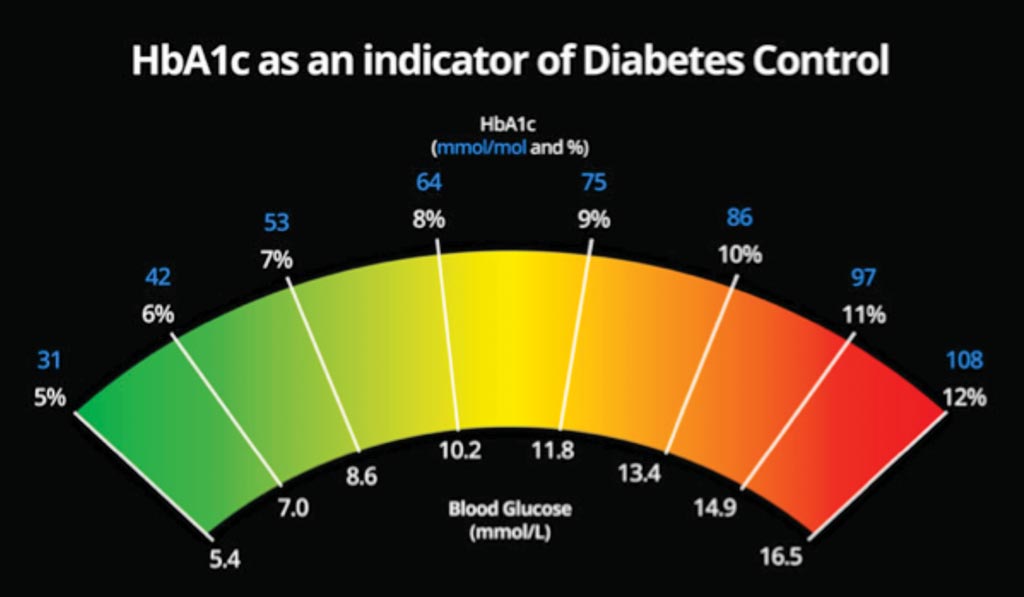HbA1c Assessed in Diabetics Awaiting Liver Transplantation
By LabMedica International staff writers
Posted on 31 Dec 2018
A glycated hemoglobin (HbA1c) test measures the amount of blood sugar (glucose) attached to hemoglobin. An HbA1c test shows what the average amount of glucose attached to hemoglobin has been over the past three months. It's a three-month average because that's typically how long a red blood cell lives.Posted on 31 Dec 2018
Diabetes is a leading cause of liver disease, with cirrhosis responsible for a considerable number of deaths in people with diabetes. The relationship between HbA1c and glucose in people with co-existing liver disease and diabetes awaiting transplant, and in those with diabetes but no liver disease has been investigated.

Image: Glycated hemoglobin (HbA1c) as an indicator of diabetes (Photo courtesy of Diabetes.co.uk).
Scientists collaborating with the University of Birmingham (Birmingham, UK) collected HbA1c and random plasma glucose data for 125 people with diabetes without liver disease and for 29 people awaiting liver transplant with diabetes and cirrhosis. The median (interquartile range) Model for End Stage Liver Disease score for the study cohort was calculated as 12 (9-17; normal is less than 6). In those with cirrhosis, this was caused by non-alcoholic fatty liver disease, hepatitis C, alcoholic liver disease, hereditary hemochromatosis, polycystic liver/kidneys, cryptogenic/non-cirrhotic portal hypertension and α-1-antitrypsin-related disease.
The team found that the median (interquartile range) HbA1c concentrations were 41 (32-56) mmol/mol [5.9 (5.1-7.3)]% versus 61 (52-70) mmol/mol [7.7 (6.9-8.6)%], respectively, in the diabetes with cirrhosis group versus the diabetes without cirrhosis group and the glucose concentrations were 8.4 (7.0-11.2) mmol/L versus 7.3 (5.2-11.5) mmol/L. HbA1c concentration was depressed by 20 mmol/mol (1.8%) in 28 participants with cirrhosis, but elevated by 28 mmol/mol (2.6%) in the participant with α-1-antitrypsin disorder.
Those with cirrhosis and depressed HbA1c concentrations had fewer larger erythrocytes, and higher red cell distribution width and reticulocyte count. This was reflected in the positive association of glucose with mean cell volume and hemoglobin level and the negative association for HbA1c concentration in the diabetes group. The authors concluded that HbA1c is not an appropriate test for blood glucose in people with cirrhosis and diabetes awaiting transplant as it reflects altered erythrocyte presentation. The study was published on November 26, 2018, in the journal Diabetic Medicine.
Related Links:
University of Birmingham












